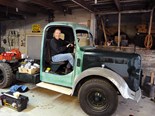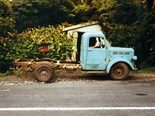K Bedford Restoration Project: Part 3
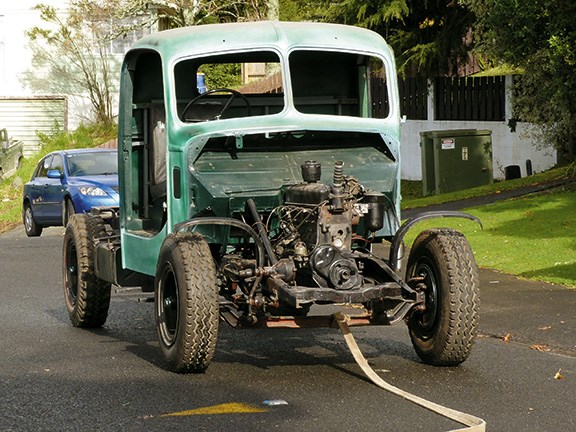 Ready for the tow to Murray's workshop.
Ready for the tow to Murray's workshop.

 The front end is starting to come together.
The front end is starting to come together.

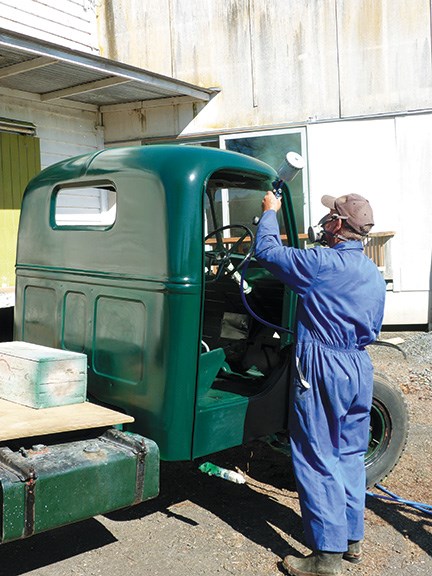

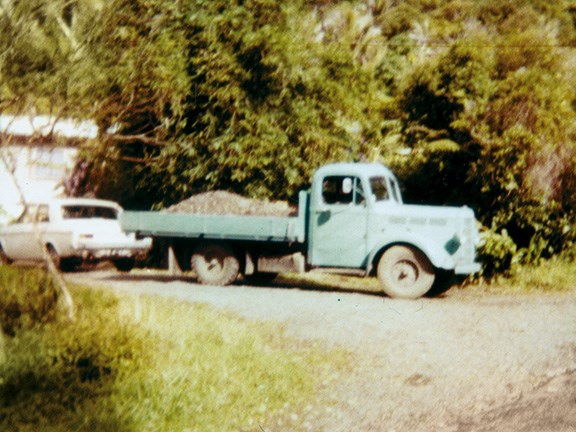


|
|
Ready for the tow to Murray's workshop.
|

|
|
The front end is starting to come together.
|

|

|
It seems like no time at all since I wrote the first article in this restoration series, back in June this year. At the time, although the old K looked relatively intact, but in reality it was merely a shell.
Three months ago, all we had was a rolling chassis with a cab, engine, and gearbox, with the grille attached to the rest of the running gear.
Back then the unit was housed in my mate Dean Southey's workshop, where we started by placing the truck on axle stands and got straight to work on the brakes, which, like the rest of the truck (along with its owner), hadn't seen any action for nigh on 30 years — well it seems that long anyway!
The Bedford’s brakes
The brakes to date have been the most costly part of the exercise, as the tandem master cylinder, the two front-wheel cylinders and the weird rear bisector cylinders needed to be re-sleeved.
This wasn't helped in any way by the fact that in the re-fitting process we forgot to fit a couple of compression springs and in between the time we'd discovered our error and the time we'd got to go back and do the job properly, we'd lost one of the springs.
Horopito Motors found us a replacement and when the job was completed, we had brakes that worked as good as new.
Horopito Motors has been fantastic in helping us out of tight spots, as it was the company that found us a shaft for the brake and clutch pedals that had gone missing.
We found there are two entirely different mechanisms for the pedals on the crash and synchromesh gearbox models.
However, once we had got that minor detail sorted, it didn't take us too long before we had brakes that could be operated from the cab, instead of having to shove a screwdriver into the master cylinder in order to confirm we had some evidence of brake effort.
Moving the truck
My good friend, Murray Firth, and I had been dedicating each Wednesday for the last three months to working on the mechanicals of the truck, with Murray giving quite a few evenings and every spare moment he could find during the day.
Having made the decision to move the truck one particular Wednesday, the next decision was how we would carry out the task.
I was all in favour of paying a towing company the sixty or so dollars it would cost to do the job — after all, I'd been happy to pay my money to shift the truck this way probably half a dozen times over the last nigh on 30 years.
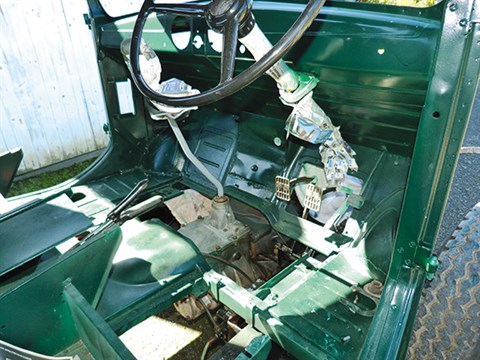
Murray, on the other hand, was dead keen on doing it the traditional Kiwi way — on a towing strop. The fact the truck didn't have any windows, doors, or even floorboards didn't seem to bother him one little bit.
I'm guessing his rationale for this line of thinking had its basis in the fact it was yours truly, and not he, who was going to be in the vehicle being towed.
As for me, I was getting cold feet over the idea, citing the fact the local constabulary mightn't be impressed at the sight of this almost prehistoric contrivance being towed along the road.
In any event, the day of the big shift arrived. Having checked and double checked that the brakes were capable of pulling both vehicles up in an emergency stop, and after fitting a temporary wiring loom for brakes and indicators, off we headed in the direction of Murray's place.
Even though we'd been travelling the short route there and back for three months and never ever seen a police car, we saw two in the space of two minutes. However, we must have looked like we were taking due care and we soon found ourselves parking the old K in Murray's shed.
That magical day occurred almost two months prior to writing and was the first time the truck had travelled anywhere on its own four wheels, even though it wasn't under its own steam.
The next steps
During the truck's time at the Firth residence, the cab has been primed, the mudguards, grille, and bonnet have been test-fitted, removed again and painted, the cab has had one of its two topcoats applied and in the next instalment (Part 4) we hope to be able to present a complete truck, minus a tray.
The weather in Auckland over the month of August has been abominable and we've probably lost a couple of weeks or more because of moisture content in the air, which wouldn't have been a problem had we have had a spray booth big enough to fit the truck in — but that, I guess, is what makes it a whole lot more fun.
The wiring loom hopefully will have arrived from England by the next instalment as well, and with a bit of luck, we hope to be able to at least drive the old girl around parts of Murray's twenty-five acre property.
As an interesting aside, I'm unsure as to how well the Bedford gods are going to react to this bit of news, but I've just been on a road trip to the South Island to set up my next restoration project. I've brought back a couple of 1960s FGK Morris trucks.
I'll be telling how that went in an upcoming issue.
Restoration tip of the month: Be flexible in your planning because the weather plays a significant role in determining the pace at which things happen.
For the latest news and reviews, subscribe to Deals On Wheels magazine here.
Keep up to date in the industry by signing up to Deals on Wheels' free newsletter or liking us on Facebook.



.jpg)



